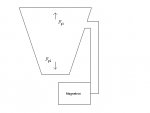- Joined
- Sep 30, 2011
- Messages
- 4,207
- Reaction score
- 2,615
- Gender
- Male
- Political Leaning
- Undisclosed
Nasa validates 'impossible' space drive (Wired UK)
From what I've read the experiment disproved one of the theories for how it's generating thrust (asymmetry of Lorentz force). The remaining theory seems to be it's somehow pushing off of the virtual particles that are bubbling in and out of existence in a vacuum.
The whole thing is very questionable at this point. More testing is in order.
From what I've read the experiment disproved one of the theories for how it's generating thrust (asymmetry of Lorentz force). The remaining theory seems to be it's somehow pushing off of the virtual particles that are bubbling in and out of existence in a vacuum.
The whole thing is very questionable at this point. More testing is in order.

